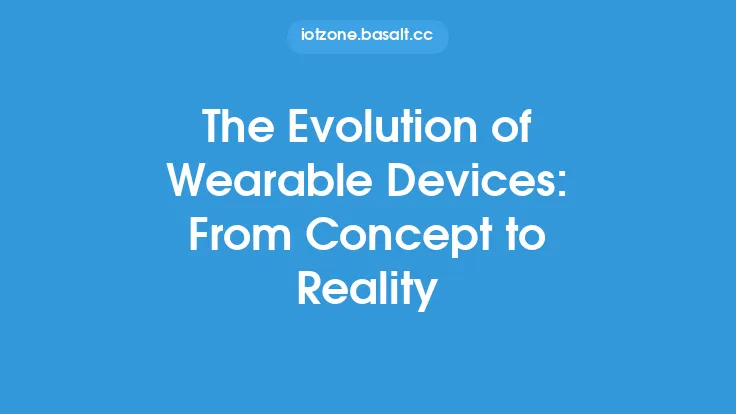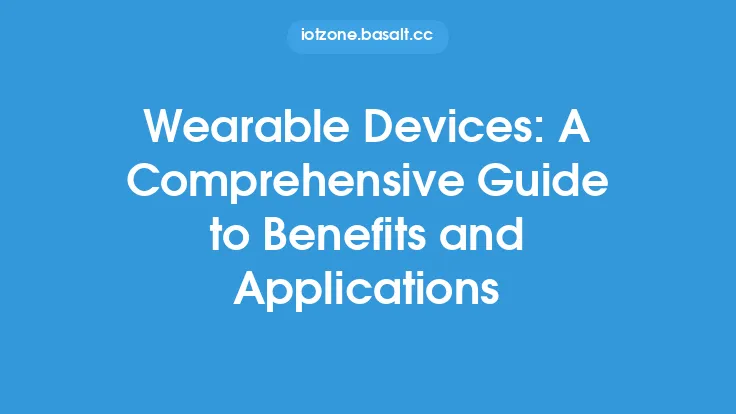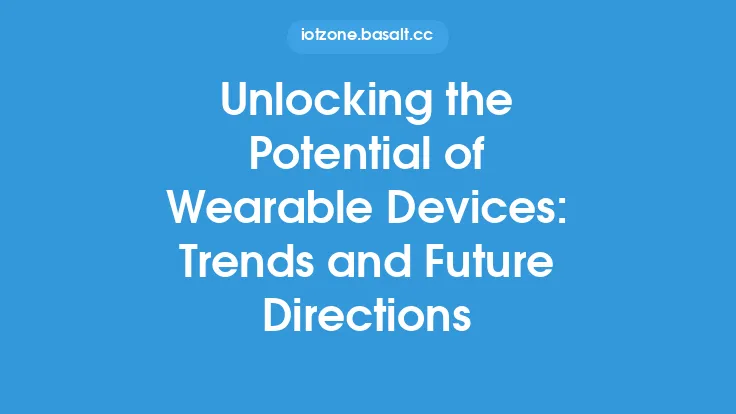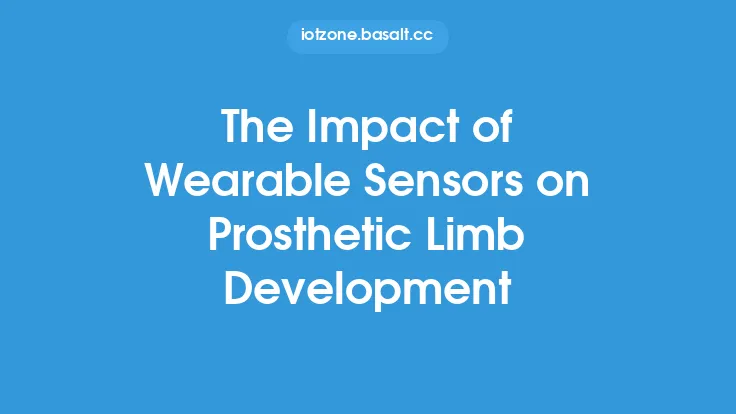The advent of wearable devices has revolutionized the way we live, interact, and perceive our surroundings. These devices, which can be worn on the body, have become an integral part of our daily lives, providing us with a wide range of benefits and applications. From fitness tracking and health monitoring to smart notifications and navigation, wearable devices have made a significant impact on society. In this article, we will delve into the world of wearable devices and explore their impact on society, with a focus on IoT applications.
History of Wearable Devices
The concept of wearable devices dates back to the 1960s, when the first wearable computer was developed. However, it wasn't until the 2010s that wearable devices started to gain popularity, with the launch of devices such as the Fitbit and the Apple Watch. Since then, the market for wearable devices has grown exponentially, with a wide range of devices available, from smartwatches and fitness trackers to smart glasses and hearables. The development of wearable devices has been driven by advances in technology, including the miniaturization of electronics, improvements in battery life, and the development of new materials and sensors.
Types of Wearable Devices
There are several types of wearable devices available, each with its own unique features and applications. Some of the most common types of wearable devices include:
- Smartwatches: These devices are designed to be worn on the wrist and provide a range of features, including timekeeping, fitness tracking, and smart notifications.
- Fitness trackers: These devices are designed to track physical activity, such as steps taken, distance traveled, and calories burned.
- Smart glasses: These devices are designed to provide a wearable display, allowing users to access information and interact with their surroundings in a hands-free way.
- Hearables: These devices are designed to be worn in the ear and provide a range of features, including music playback, voice assistance, and health monitoring.
- Smart clothing: These devices are designed to be integrated into clothing and provide a range of features, including fitness tracking, health monitoring, and smart notifications.
IoT Applications of Wearable Devices
Wearable devices are a key component of the Internet of Things (IoT), which refers to the network of physical devices, vehicles, home appliances, and other items that are embedded with sensors, software, and connectivity, allowing them to collect and exchange data. Wearable devices are connected to the IoT through a range of technologies, including Bluetooth, Wi-Fi, and cellular networks. Some of the key IoT applications of wearable devices include:
- Health and wellness: Wearable devices can be used to track physical activity, monitor health metrics, and provide personalized recommendations for improvement.
- Smart homes: Wearable devices can be used to control and interact with smart home devices, such as lights, thermostats, and security systems.
- Industrial applications: Wearable devices can be used to track worker safety, monitor equipment performance, and provide real-time feedback and guidance.
- Transportation: Wearable devices can be used to track vehicle performance, monitor driver behavior, and provide real-time traffic updates and navigation.
Technical Aspects of Wearable Devices
Wearable devices are equipped with a range of sensors and technologies that enable them to collect and transmit data. Some of the key technical aspects of wearable devices include:
- Microelectromechanical systems (MEMS): These are small mechanical systems that are used to measure physical parameters, such as acceleration, orientation, and pressure.
- Sensors: These are devices that detect and measure physical parameters, such as temperature, humidity, and light.
- Wireless communication protocols: These are protocols that enable wearable devices to communicate with other devices and systems, such as Bluetooth, Wi-Fi, and cellular networks.
- Power management: This refers to the systems and technologies that are used to manage power consumption and extend battery life in wearable devices.
Impact of Wearable Devices on Society
The impact of wearable devices on society has been significant, with a wide range of benefits and applications. Some of the key ways in which wearable devices have impacted society include:
- Improved health and wellness: Wearable devices have enabled people to track their physical activity, monitor their health metrics, and make informed decisions about their lifestyle.
- Increased productivity: Wearable devices have enabled people to stay connected and access information on the go, improving productivity and efficiency.
- Enhanced safety: Wearable devices have enabled people to track their location, monitor their surroundings, and receive alerts and notifications in emergency situations.
- New business models: Wearable devices have enabled new business models, such as subscription-based services and data analytics, which have created new revenue streams and opportunities for innovation.
Future Directions
The future of wearable devices is exciting and rapidly evolving, with a wide range of new technologies and applications on the horizon. Some of the key future directions for wearable devices include:
- Augmented reality: This refers to the use of wearable devices to overlay digital information onto the physical world, enhancing the user experience and providing new forms of interaction.
- Artificial intelligence: This refers to the use of wearable devices to collect and analyze data, providing personalized recommendations and insights to users.
- 5G networks: This refers to the use of wearable devices to take advantage of the high-speed, low-latency connectivity provided by 5G networks, enabling new forms of interaction and application.
- Biometrics: This refers to the use of wearable devices to collect and analyze biometric data, such as heart rate, blood pressure, and brain activity, providing new insights into human health and behavior.





